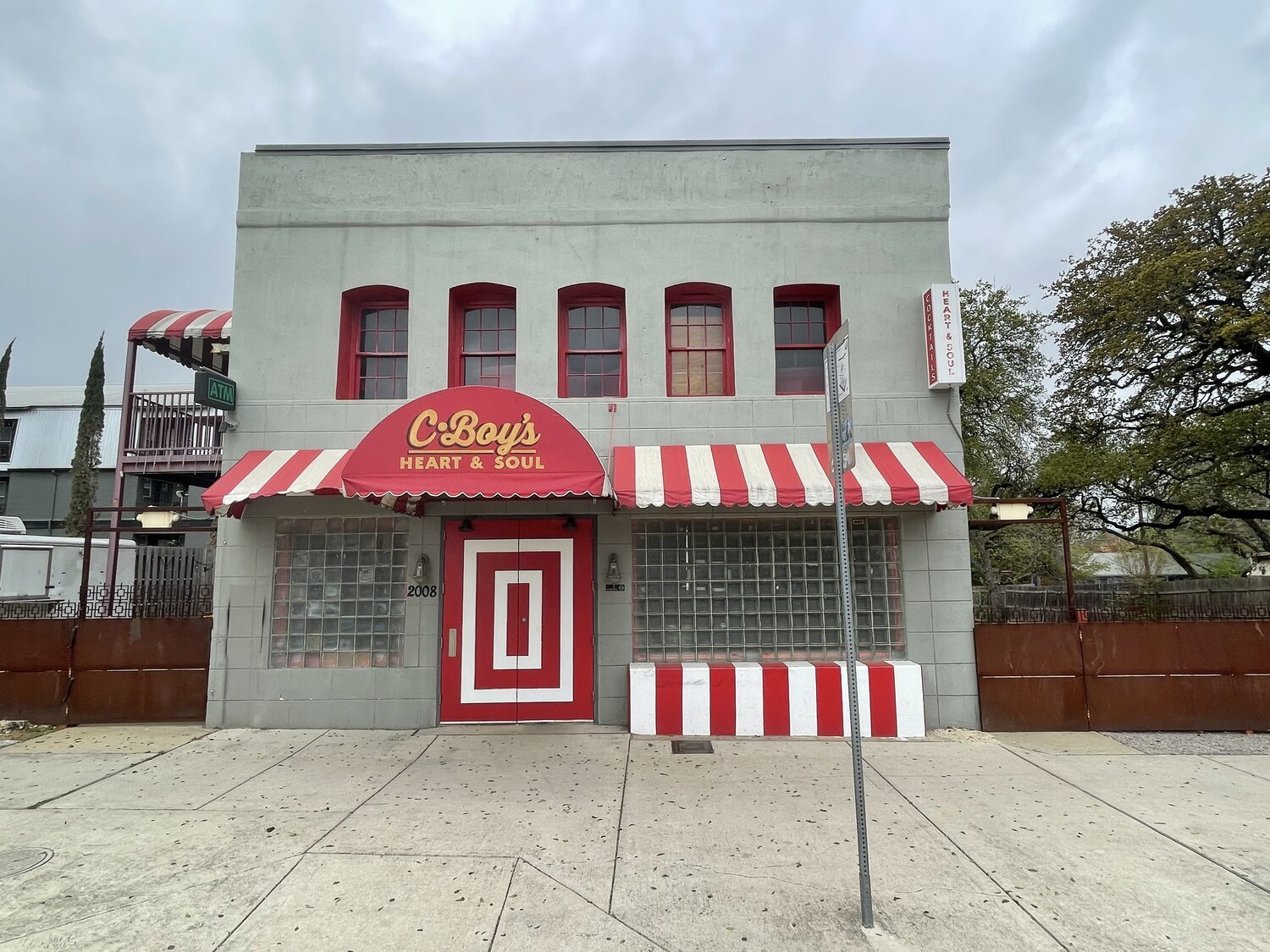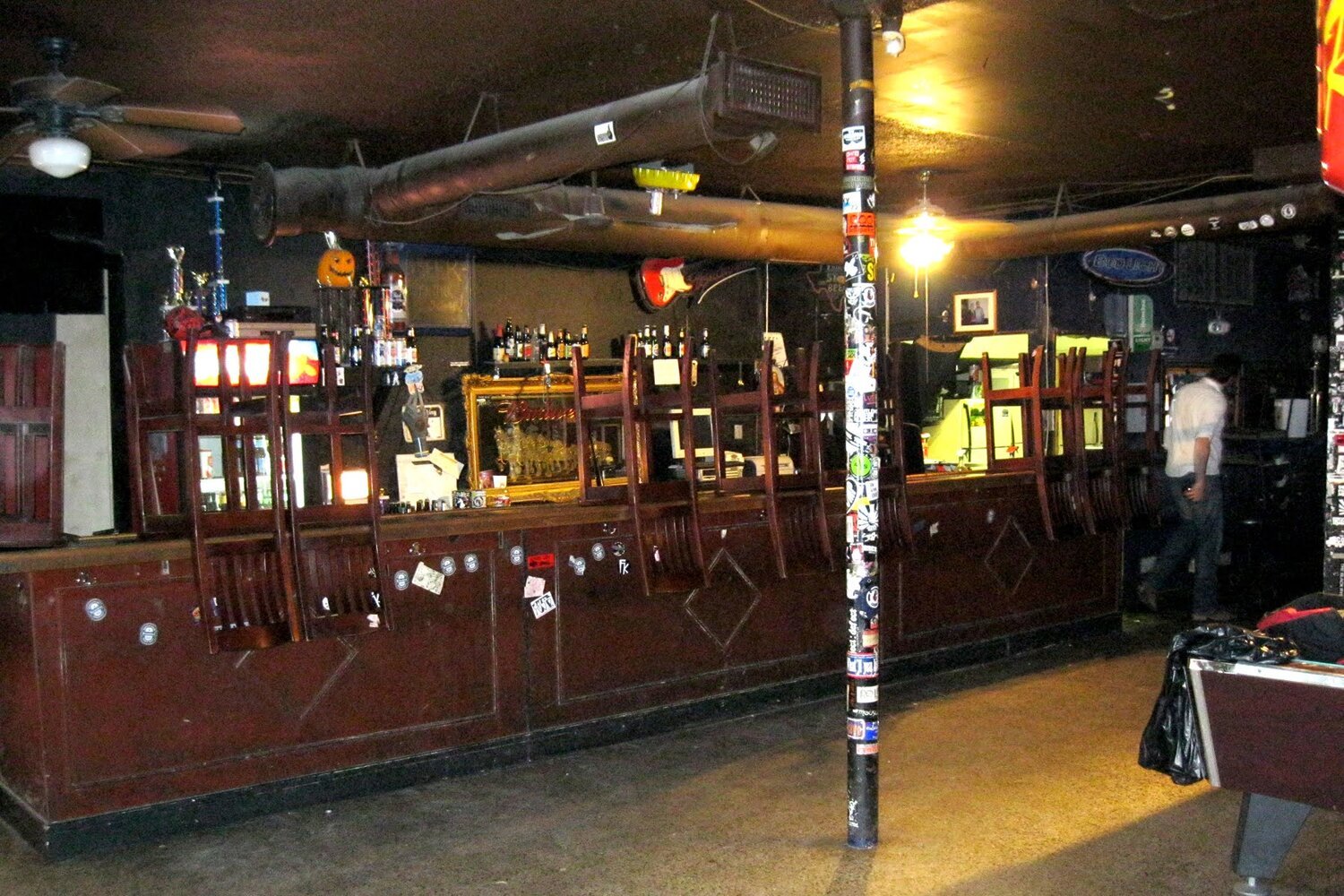Former Auto Parts Store, Dive Bar and Flop House Transform to C-Boy’s Heart & Soul on Congress
BY SUTTON GEISE
C-Boy’s Heart & Soul, 2015
South Congress Avenue’s Early History
South Congress Avenue was laid out on axis with Congress Avenue, which runs straight through downtown to the Capitol. The Avenue started out as a postal route to Austin and a main highway to San Antonio. The avenue was often referred to as the Post Road or the San Antonio Road.
James Gibson Swisher, an immigrant who owned a farm directly across the river from Austin, set up a ferry “at the foot of Congress Avenue, Austin’s busiest street.”6 In 1877, John Milton Swisher, James Swisher’s son, subdivided 23 acres of their farm along the Post Road. South Austin, as it was already referred to, was to be developed as a commuter community for a growing Austin. After the completion of a concrete bridge across the river in 1910, development in South Austin increased significantly.
Impact of Car Culture
C-Boy’s Heart & Soul’s exterior before rehabilitation
C-Boy’s Heart & Soul’s exterior after rehabilitation
South Congress was a major conduit into Austin from the south and the advent of car culture meant automobile-oriented businesses flourished through the 1920s to the 1940s.
In 1931 the City awarded a contract to pave a portion of South Congress, between Riverside Drive and Bouldin Creek. In 1937, the limestone and wood frame building that now houses C-Boys Heart & Soul, at 2008 S. Congress Avenue, became part of the South Congress landscape.
Early Beginnings of an Entertainment
Area During the 1950s, South Congress Avenue saw many major civic developments. There were shopping centers, tourist accommodations, restaurants, building material stores and grocery stores. The period also saw the early beginnings of an entertainment area. In 1957, The Continental Club opened as a “swank, private supper club.” In the early 1960s, South Congress’ business culture declined, as people went east to Interstate 35. However, South Congress Avenue was not dead. After some years in decline, inexpensive rents began to draw clubs and restaurants again. In the mid1960s, 2008 South Congress Ave. (C-Boy’s location) was “The It’ll Do Club” and from the early 1970s through the early to mid1980s the building was “Donna’s Club.” In the 1970s and 1980s those same low rents drew many musicians and music venues. Arguably the most famous was the Armadillo World Headquarters, on Barton Springs Road, just off South Congress. Small retailers and artists also began to populate the South Congress area.
The location had a brief run in the 1980s as “Big Mamou,” one of the first Cajun restaurants in Austin. By 1988 the “Blue Bayou” restaurant occupied the space. After a long history as an auto parts store, dive bar and flop house, the property at 2008 South Congress was at a crossroads in 2012. The current occupant, Trophy’s Bar & Grill, couldn’t continue to pay the monthly rent and property values in South Austin were rising; one after another, small old buildings came down to make way for new condominium and apartments developments.
Lower bar before rehabilitation
Lower bar after rehabilitation
To the Rescue
Steve Wertheimer, owner of The Continental Club, swept in and realized a dream. He created C-Boy’s Heart & Soul, a club dedicated to his mentor, C-Boy Parks, who was “a fixture in the 1970s Austin blues community.”
The building was in terrible condition. There were major structural issues: fixtures were damaged beyond repair, rodents had invaded; there was fire damage, rotted wood and electrical problems. However, the building had its charms – a fabulous original terrazzo floor, solid exterior limestone walls, a great location and a long Austin history. Paul Clayton and Ken Johnson, with Clayton & Little Architects, designed, planned and priced for months. “A new steel frame was carefully inserted within the walls and infilled with wood and steel framing. The original 24-inch thick limestone walls were soundly tied to the new structure while preserving much of the original plaster that remained. A new roof tied into the existing parapet walls all new wiring, air conditioning and plumbing systems were woven into the new structure to prepare the building for the next 50-100 years of service. An accessible entrance was created in an existing doorway and two new steel stairs bring patrons to the second floor. New restrooms and a large patio have welcomed neighbors back to a spot that was previously unapproachably rowdy.”
C-Boys upper bar after rehabilitation
C-Boy’s Heart and Soul opened to a packed house on New Year’s Eve 2013. There are two bars, one upstairs and one down. There is a stage and access to the back patio across that terrazzo tile on the first floor, and the second floor is reminiscent of a 1950s-1960s-era lounge with round red vinyl booths and stylish bathrooms. Ken Johnson and Paul Clayton said: “Buildings like this are important in the rapidly changing landscape of today’s Austin. This building represents an era of construction that is rarely protected. It preserves a sense of scale and intimacy that will help act as an anchor for future development in the area.”
C-Boy’s Heart & Soul, Today
South Congress Avenue has changed and undergone many iterations and name changes over its 135+ year history. It remains a heavily traveled major route carrying people to and from downtown Austin. It has become a vibrant shopping district, and music and restaurant destination. People from all over Austin can come to enjoy the unique food or entertainment experiences that are provided by places like C-Boy’s Heart & Soul at 2008 South Congress Avenue.
THIS ARTICLE WAS WRITTEN FOR PRESERVATION AUSTIN’S WINTER 2015 NEWSLETTER. READ OUR COMPLETE NEWSLETTER ARCHIVE HERE.






